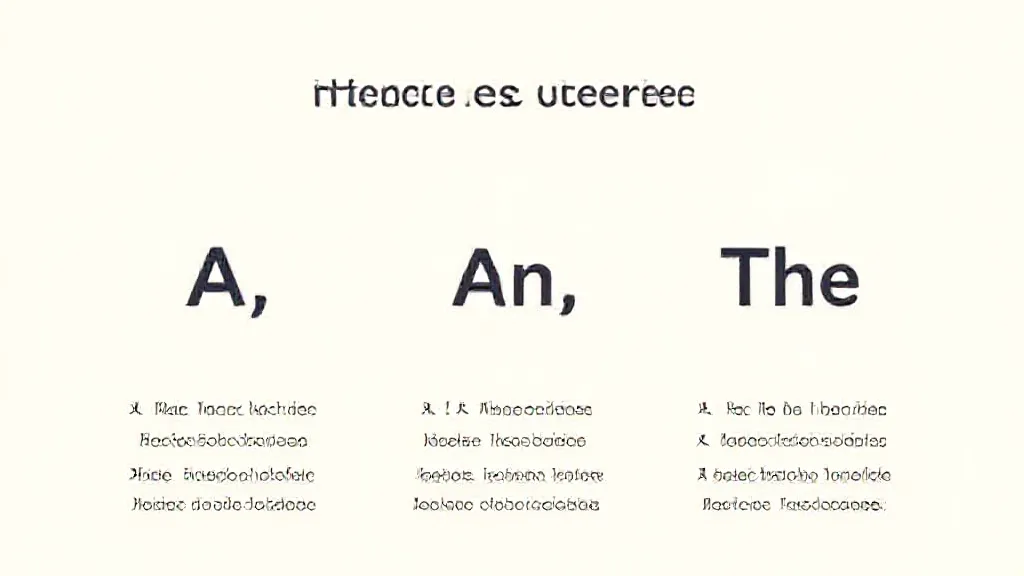Articles are fundamental components of the English language, serving as indicators of specificity and quantity. The articles "a," "an," and "the" may seem simple, yet they are frequently misused, leading to confusion and miscommunication. Understanding the rules governing these articles is crucial for effective communication, particularly in educational settings where clarity is paramount.
The Role of Articles in English Grammar
Articles are classified into two categories: indefinite and definite. "A" and "an" are indefinite articles, used to refer to non-specific items. For instance, saying "I saw a dog" implies that any dog was seen, not a particular one.
In contrast, "the" is a definite article, used to refer to specific items known to both the speaker and listener, as in "the dog that I saw yesterday." Misuse often occurs when speakers confuse the specificity of the noun they are referencing, leading to ambiguity in communication.
Common Misunderstandings of Indefinite Articles
One of the most common mistakes involving "a" and "an" is the failure to recognize when to use each.
"A" is used before words that begin with a consonant sound, while "an" is used before words starting with a vowel sound. For example, we say "a cat" because "cat" begins with a consonant sound, but we say "an apple" because "apple" begins with a vowel sound. This distinction can be particularly challenging for non-native speakers who may not be familiar with the phonetic nuances of English.
The Definite Article: When to Use "The"
The article "the" can also be misused, particularly when it comes to generalizations versus specifics. For example, saying "The dogs are friendly" implies a specific group of dogs, whereas "Dogs are friendly" makes a general statement about all dogs. Misusing "the" can lead to misunderstandings about the intended meaning, especially in academic writing where precision is essential.
Cultural Influences on Article Usage
Cultural background can significantly impact how articles are used and understood. In some languages, such as Russian or Chinese, articles do not exist, leading speakers to omit them in English. This can result in sentences that sound incomplete or vague, such as "I want book" instead of "I want a book.
" Educators must be aware of these differences and provide tailored instruction to help learners grasp the concept of articles in English.
The Impact of Technology on Article Usage
In the digital age, the proliferation of informal communication platforms has led to a decline in the proper use of articles. Social media, texting, and instant messaging often prioritize brevity over grammatical correctness, resulting in sentences like "I saw dog" instead of "I saw a dog.
" This trend can influence language acquisition, particularly among younger generations who may not receive adequate instruction in formal writing.
Teaching Strategies for Correct Article Usage
To address the misuse of articles, educators can implement various teaching strategies. Interactive exercises that focus on identifying and correcting errors can be beneficial.
Additionally, using visual aids and real-life examples can help students understand the context in which different articles should be used. Encouraging peer review and collaborative writing can also foster a deeper understanding of article usage.
The Importance of Context in Article Usage
Context plays a crucial role in determining which article to use.
For instance, in scientific writing, specificity is often paramount, and the correct use of "the" can clarify a statement's meaning. In contrast, creative writing may allow for more flexibility with articles, enabling authors to play with language for stylistic effects. Understanding the context in which articles are used can enhance both written and spoken communication.
Conclusion: Mastering Articles for Effective Communication
In conclusion, the misuse of articles "a," "an," and "the" can lead to significant misunderstandings in communication. By recognizing the rules governing these articles and understanding their contextual applications, individuals can improve their language skills. For educators, fostering a clear understanding of article usage is essential for helping students articulate their thoughts effectively.
As language continues to evolve, ongoing education and practice will remain crucial in mastering the nuances of English grammar.
